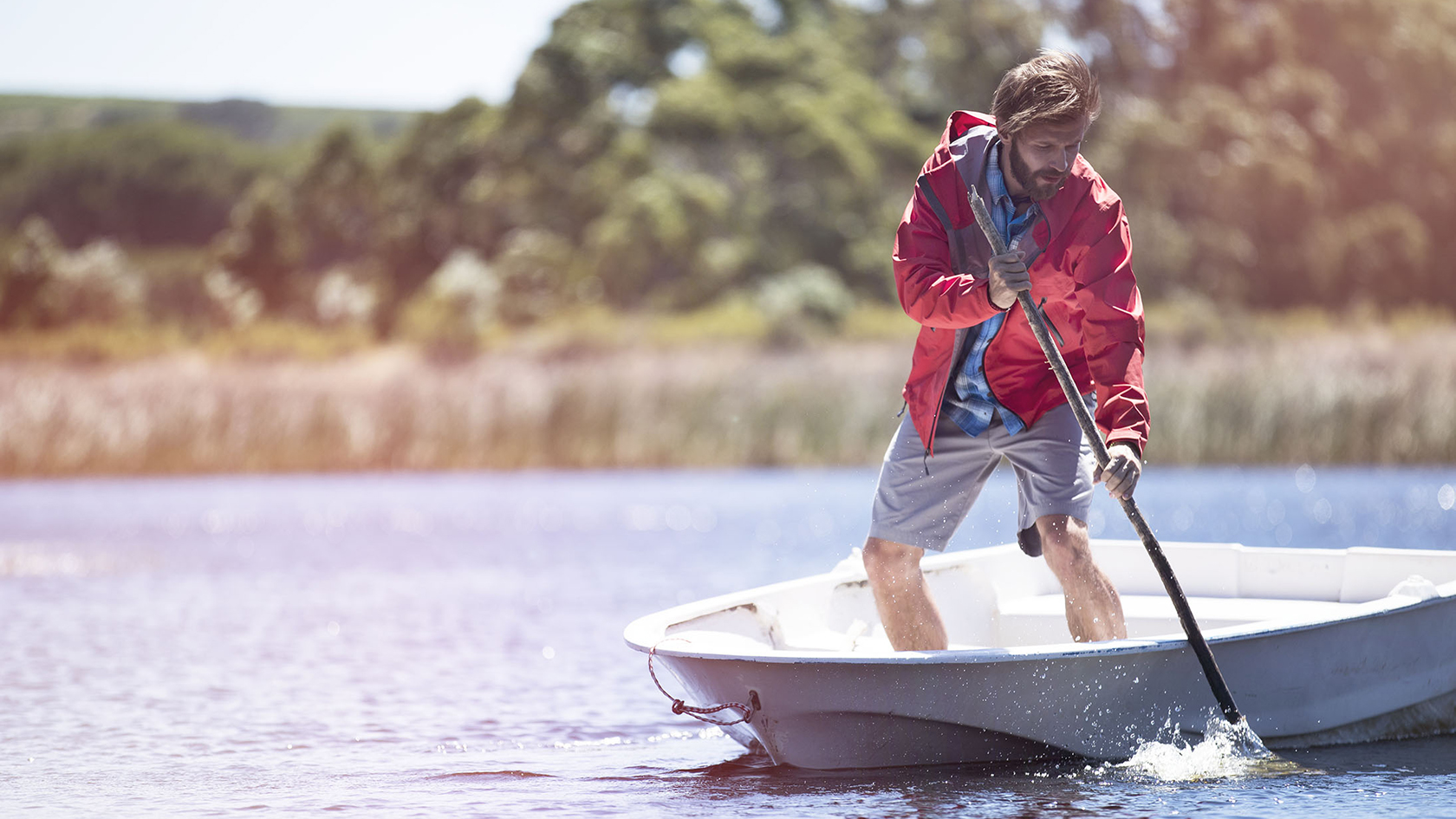When to Wash, Reproof, Repair, or Replace your Waterproof
When To Replace Your Waterproof Jacket
A waterproof jacket is an outdoor staple, so you must ensure that your jacket stays effective at keeping water out all year round. If you notice your waterproof coat's performance is compromised, it may be time to reproof, repair, or replace it to ensure you're protected and safe from the elements for the many adventures yet to come.

When Should I Wash My Waterproof Jacket?
If your waterproof jacket isn't performing as well as it used to, the first thing you should try is washing it according to the label instructions. Over time, environmental pollutants, mud, and general dirt will coat the inside and outside of your jacket, resulting in poor breathability and waterproof functioning. Try washing your waterproof coat according to the label instructions and following our Waterproof Care Guide. We also offer an incredible selection of performance and technical cleaners specially designed for use on waterproof clothing:
When Should I Reproof My Waterproof Jacket?
Most technical waterproof jackets are treated with a DWR (Durable Water Repellent) finish. This treatment is applied to the jacket's exterior and keeps the outer fabric from allowing moisture to enter. A working DWR finish will cause water droplets to bead and roll off. However, abrasion from rucksack straps, heavy usage, dirt, and pollutants all unfortunately help to degrade DWR finishes over time.
Key Causes of DWR Degradation
Abrasion: Friction from rucksack straps or frequent use.
Dirt and pollutants: Oils, sweat, or airborne contaminants.
Heavy usage: Regular exposure to rain, washing, or harsh conditions.
Signs Your Jacket Needs Reproofing
Water no longer beads: Instead, it soaks into the fabric.
Reduced breathability: Jacket feels clammy or retains moisture.
Visible wear: Loss of sheen or uneven water repellency.
Reproofing restores the DWR layer, ensuring your jacket maintains its water resistance and breathability. Regular maintenance (e.g., cleaning before reproofing) maximises effectiveness.

A 'wetted out' jacket (left) and following reproofing (right).
How often you need to reproof a jacket depends on how much you use it and the activities and conditions you use it in. As well as feeling unpleasant against the skin, a poorly functioning DWR finish can lead to condensation on the inner. So, if your jacket clings, sags, or you find water sinking into the outer fabric, it’s time to reproof your jacket.
If you wear your waterproof coat frequently in all weather, we recommend reproofing every three to four months. However, if you wear your waterproof jacket less regularly or are out in less extreme weather, we recommend reproofing your waterproof coat every six months.
For help on reproofing your waterproofs, check our Waterproof Care Guide for more advice, or shop our incredible selection of reproofing products specially designed for use on technical waterproof clothing:
How Can I Repair Your Waterproof Jacket?
If your waterproof is ripped or has holes in the fabric, repairing it can restore its functioning. At Cotswold Outdoor, we're on a mission to keep outdoor clothing and kit out of landfill. That's why we have our very own Repair & Care service.
We believe the most sustainable product is the product you already own. That's why we want to do what’s right for the environment, and prolonging a garment’s lifespan helps to preserve our planet’s resources, reduces chemical pollution, and saves unnecessary carbon emissions.
Click the button below to learn more about how to send your waterproof jacket to our Repair & Care service today:
If your waterproof is ripped or has small holes in the fabric, repairing it with a repair patch at home can help restore its functioning. We recommend using a Patagonia Worn Wear or Gore-Tex patch. These patches are easy to use: Simply fix a patch to the garment via an adhesive layer on the back of the patch. No sewing needed!
When Should I Replace My Waterproof Jacket?
Waterproof jackets are durable, but they do have their limits. Over time, even the best jackets can lose their effectiveness despite your best efforts at maintenance.
Steps to Take Before Replacing
Wash your jacket to remove dirt and contaminants that can affect performance.
Reproof the jacket to restore the Durable Water Repellent (DWR) finish.
Repair any damage such as rips, tears, or broken zippers.
Time to Replace
If you’ve tried:
Washing,
Reproofing, and
Repairing
and none of these steps have restored your jacket’s waterproof performance, then it’s probably time to invest in a new waterproof coat.
Regular care can extend the life of your jacket, but sometimes replacement is the only way to ensure you stay dry and comfortable.
Luckily, at Cotswold Outdoor, we have an incredible range of the best outdoor performance waterproof jackets on the market. From the best men's waterproof jackets for the morning dog's walk to the best women's waterproof jackets for mountaineering - shop from the best brands in one place with our fantastic waterproof jacket selection:
Find out more about how to choose a waterproof jacket here, or if you still need more help, visit us in-store for expert advice on the best waterproof jacket for your adventures.
Click the button below to check out more from our incredible waterproof jacket range...
FAQs
If your jacket no longer repels water, even after washing and reproofing, or if water starts soaking through the fabric rather than beading on the surface, it’s likely time to replace it. Persistent dampness inside, sagging, or clinging fabric are signs the waterproof membrane may have failed beyond repair.
Check for fraying, thinning, or tearing in the fabric, especially at high-wear areas like seams, cuffs, and shoulders. If the fabric is stretched out, no longer holds its shape, or has visible holes, it’s unlikely to provide adequate protection and should be replaced.
If you feel clammy or sweat builds up inside the jacket, it may have lost its breathability. This can happen when the membrane or lining deteriorates, trapping moisture and reducing comfort. If breathability doesn’t improve after cleaning, consider replacing the jacket.
Small rips or holes can often be patched, but large tears, extensive seam tape failure, or significant fabric delamination usually mean the jacket is beyond repair and should be replaced for reliable protection.
With proper care, high-quality waterproof jackets can last 3–5 years with regular use, and sometimes up to 10 years if used infrequently and stored well. Cheaper or lighter jackets may need replacing sooner, especially if exposed to heavy wear or poor maintenance.
Yes! Regularly washing with technical cleaners and reproofing with DWR treatments can restore water repellency and breathability. Avoid standard detergents and fabric softeners, as they can damage the jacket’s performance. Promptly repair small rips to prevent further damage.
Related articles

Let us know you agree to cookies
We use marketing, analytical and functional cookies as well as similar technologies to give you the best experience. Third parties, including social media platforms, often place tracking cookies on our site to show you personalised adverts outside of our website.
We store your cookie preferences for two years and you can edit your preferences via ‘manage cookies’ or through the cookie policy at the bottom of every page. For more information, please see our cookie policy.






